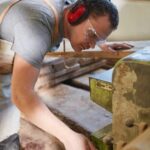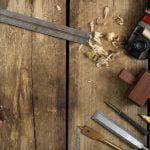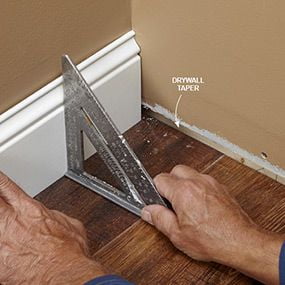When working with wood, it is crucial to prioritize safety and comfort, which begins with knowing what to wear when woodworking. The right attire can make a significant difference in protecting yourself from potential risks and hazards associated with woodworking tasks. Whether you are a seasoned woodworker or just starting, understanding the importance of proper clothing is essential for a successful and safe woodworking experience.
Woodworking involves various risks, such as sharp tools, flying debris, and harmful chemicals present in stains and finishes. Wearing the appropriate clothing can help mitigate these risks by providing physical protection against these potential dangers. From coveralls to safety glasses, each piece of attire plays a crucial role in ensuring your safety while working on woodworking projects.
In addition to protection, choosing the right clothing also influences your overall comfort and productivity during woodworking tasks. Comfortable yet durable pants, shirts, boots, and other gear are essential for maneuvering through different woodworking activities smoothly. By selecting the right attire tailored to the specific requirements of woodworking, you can focus on honing your craft without compromising your safety or style.
Safety First
Woodworking is a rewarding and fulfilling hobby or profession that allows individuals to exercise their creativity and skills. However, it is essential to prioritize safety when engaging in woodworking activities. Understanding the risks associated with woodworking is crucial in order to protect yourself from potential hazards.
From sharp tools to flying wood chips, there are numerous dangers present in the woodworking environment that can cause serious injuries if proper precautions are not taken. This section will delve into the importance of safety in woodworking and provide tips on how to stay safe while pursuing your woodworking projects.
Identifying Safety Hazards
Before even stepping into your workshop, it’s important to identify potential safety hazards that may pose risks during woodworking. Sharp tools such as chisels, saws, and knives can cause cuts or lacerations if not handled properly. Splinters from untreated wood can also lead to painful injuries. Additionally, inhaling sawdust and wood particles can result in respiratory issues over time. Understanding these hazards will help you take necessary precautions to mitigate risks.
Proper Attire for Woodworking Safety
One of the most important aspects of staying safe while woodworking is ensuring you are wearing the right clothing and gear. From head to toe, every part of your body should be protected.
This includes wearing coveralls or durable work pants to protect your legs from cuts and scratches, as well as long-sleeved shirts or jackets to shield your arms from splinters. Choosing appropriate footwear is also crucial – sturdy boots offer better protection than sneakers since they provide ankle support and a thicker sole for potential tool drops or heavy objects falling.
By understanding the risks associated with woodworking and taking necessary precautions such as wearing the right attire, you can ensure a safe and enjoyable woodworking experience. Remember that safety should always be your top priority when working on any project in the workshop. Now that you know what hazards to look out for and how to protect yourself with proper clothing, you can confidently tackle any woodworking project knowing you’re well-prepared for whatever challenges may come your way.
Essential Clothing Items for Woodworking
When it comes to woodworking, choosing the right clothing is essential for both comfort and safety. One of the most important components of your woodworking outfit is the choice of coveralls, pants, and shirts. These items not only protect your regular clothes from getting dirty or damaged but also provide an extra layer of protection against sharp tools and wood splinters.
To ensure you are properly outfitted for a woodworking project, here are some essential clothing items to consider:
- Coveralls: Coveralls are a great option for protecting your regular clothes from dust, debris, and stains. Look for coveralls made from durable materials that can withstand wear and tear.
- Pants: Opt for sturdy work pants that provide flexibility and durability. Avoid loose-fitting pants that may get caught in machinery or tools.
- Shirts: Choose long-sleeved shirts made from breathable fabrics to protect your arms from scratches and cuts. Avoid wearing loose or baggy clothing that could get caught in power tools.
In addition to these essential clothing items, don’t forget to check the fit and condition of your clothing before starting any woodworking project. Properly fitted clothing not only ensures comfort but also reduces the risk of accidents or injuries. Remember to prioritize safety over style when deciding what to wear when woodworking – it’s better to be safe than sorry.
Choosing the Right Footwear
When it comes to woodworking, choosing the right footwear is crucial to ensure not only comfort but also safety in the workshop. Whether you are a beginner or seasoned woodworker, wearing the appropriate shoes can make a significant difference in preventing accidents and injuries. Here are some factors to consider when deciding between boots and sneakers for your woodworking projects:
- Protection: Boots provide better protection for your feet compared to sneakers, especially from sharp objects, heavy tools, and falling debris. Opting for steel-toed boots can offer an extra layer of safety in case of accidents.
- Traction: Slippery surfaces are common in workshops due to sawdust and spills. Boots with a slip-resistant sole can help prevent falls and provide better traction on uneven surfaces compared to sneakers.
- Support: Standing for long periods while woodworking can take a toll on your feet. Look for boots with good arch support and cushioning to reduce fatigue and discomfort during extended work sessions.
Considering these factors, it is recommended to choose footwear that prioritizes safety and comfort over style when woodworking. While sneakers may be more breathable and lightweight, they may not offer the same level of protection as sturdy work boots. Ultimately, the choice between boots and sneakers depends on personal preference, the type of project being worked on, and individual comfort needs.
In addition to selecting the right footwear, it is essential to regularly inspect your shoes for any signs of wear or damage that could compromise their safety features. Investing in quality footwear specifically designed for woodworking can contribute significantly to maintaining a safe working environment. Remember that prioritizing safety over style when considering what to wear when woodworking will help prevent accidents and ensure a successful project outcome.
Protective Gear
When it comes to woodworking, safety should always be the top priority. Protective gear such as safety glasses, hearing protection, and dust masks are essential items that every woodworker should wear to prevent any injuries or health hazards.
Safety glasses protect your eyes from flying wood chips, sawdust, and other debris that can cause eye irritation or serious injury. Investing in a pair of high-quality safety glasses can make a significant difference in keeping your eyes safe while working on your woodworking projects.
Hearing protection is another crucial piece of protective gear when woodworking. The loud noise generated by power tools such as saws, drills, and sanders can lead to permanent hearing damage if proper precautions are not taken. Wearing earmuffs or earplugs can help reduce the risk of hearing loss and protect your ears from long-term harm. It is important to choose hearing protection that fits comfortably and provides adequate noise reduction for the type of woodworking work you are doing.
Dust masks are necessary for protecting your respiratory system from inhaling fine wood dust particles that can lead to respiratory issues such as asthma or allergies. Wood dust can also contain harmful chemicals and toxins depending on the type of wood being used, making it essential to wear a dust mask while woodworking.
NIOSH-approved respirators are recommended for filtering out airborne particles effectively. By wearing safety glasses, hearing protection, and dust masks consistently while woodworking, you prioritize your health and well-being in the workshop environment.
| Protective Gear | Importance |
|---|---|
| Safety Glasses | Protects eyes from debris |
| Hearing Protection | Prevents hearing damage |
| Dust Masks | Protects respiratory system from wood dust |
Layering Up
When it comes to woodworking, dressing properly for different temperatures is essential to ensure comfort and safety during your projects. Whether you are working in a chilly workshop or a hot outdoor space, layering up is key to adapting to changing conditions while keeping yourself protected.
In colder temperatures, it is important to wear multiple layers that can be easily added or removed as needed. Start with a moisture-wicking base layer to keep sweat away from your skin, followed by an insulating layer like a fleece jacket or thermal shirt.
Finally, top it off with a durable outer layer like a work jacket or coveralls to protect yourself from wood chips and other debris. Don’t forget about your extremities – gloves and a beanie can help keep your hands and head warm while you work.
On the other hand, when working in warmer temperatures, lightweight and breathable clothing is key to staying cool and comfortable. Opt for moisture-wicking fabrics that will help keep you dry, such as cotton or performance materials like polyester. Consider wearing short-sleeved shirts and shorts if the weather permits, but make sure they still provide enough coverage to protect your skin from splinters and scratches. And don’t forget to stay hydrated and take regular breaks to avoid overheating.
By properly layering up for different temperatures, you can ensure that you stay comfortable and safe while woodworking. Remember to always consider the specific requirements of your project and adjust your clothing accordingly. With the right gear and preparation, you can focus on creating beautiful pieces without worrying about being too hot or too cold.
Accessorizing for Safety
When it comes to woodworking, wearing the right gear is crucial to ensure both safety and comfort during your projects. In addition to coveralls, protective eyewear, and dust masks, gloves and hair protection are essential accessories that should not be overlooked.
Gloves not only protect your hands from cuts and splinters but also provide added grip when handling tools or materials. It’s important to choose gloves that fit well and allow for dexterity to prevent accidents while working with sharp objects.
In terms of hair protection, it’s advisable to keep long hair tied back or covered with a bandana, cap, or hair net to prevent it from getting caught in machinery or tools. Loose hair poses a significant risk of entanglement which could result in serious injuries while working in the workshop. By keeping your hair secured and out of the way, you can focus on your woodworking tasks without worrying about potential hazards.
Accessorizing for safety doesn’t have to mean sacrificing style. There are plenty of stylish options available when it comes to choosing gloves and hair protection for woodworking.
Opt for gloves with a comfortable fit and a modern design, and consider choosing a colorful bandana or cap to add a personal touch to your woodworking attire. Remember, looking good doesn’t have to come at the expense of safety – you can find accessories that offer both style and functionality so you can enjoy your woodworking projects safely and confidently.
Stylish Yet Functional
When it comes to woodworking, safety should always be the top priority. However, this doesn’t mean sacrificing style for functionality. Finding the right balance between fashion and safety is essential to ensure a comfortable and productive woodworking experience.
Choosing the Right Colors and Fabrics
When selecting clothing for woodworking, it’s important to consider the colors and fabrics that will not only keep you safe but also allow you to express your personal style. Opt for darker colors such as navy or black, as they are less likely to show stains from woodwork. Additionally, choose durable fabrics like denim or canvas that can withstand wear and tear in the workshop.
Utilizing Pockets and Tool Holders
To maintain a stylish yet functional look while woodworking, consider clothing with multiple pockets and tool holders. This will not only keep your tools easily accessible but also add a touch of utility to your outfit. Look for coveralls or pants with reinforced pockets for holding nails, screws, and other small items needed for your woodworking projects.
Incorporating Safety Accessories
While focusing on style is important, safety accessories should never be overlooked when woodworking. Find ways to incorporate safety glasses, hearing protection, dust masks, gloves, and hair protection into your outfit without compromising on style. Look for accessories in bold colors or designs that complement your overall look while keeping you protected during woodworking tasks. By blending fashion with safety, you can create a practical yet fashionable ensemble that will enhance your woodworking experience.
Conclusion
In conclusion, understanding the importance of what to wear when woodworking is crucial for ensuring both your safety and comfort during projects. By following the guidelines outlined in this article, you can put together the perfect woodworking outfit that combines style with functionality. Remember to always prioritize safety first by wearing protective clothing, including coveralls, pants, shirts, boots or sneakers, safety glasses, hearing protection, dust masks, gloves, and hair protection.
When dressing for different temperatures while woodworking, layering up is key to easily adjust to changing conditions in your workshop. By staying mindful of the risks involved in woodworking and choosing the right attire and protective gear accordingly, you can focus on your project without worrying about potential accidents or injuries. Additionally, finding the balance between fashion and safety is attainable by selecting stylish yet functional pieces that keep you safe without compromising your personal style.
In essence, putting together the perfect woodworking outfit involves a combination of safety-conscious clothing choices and practical accessories. By investing in quality pieces designed for woodworking activities and paying attention to details such as fit and durability, you can work comfortably and safely on your next project.
Keeping these considerations in mind will not only enhance your woodworking experience but also contribute to a successful outcome. Always remember: what you wear when woodworking matters just as much as the tools you use.
Frequently Asked Questions
How Do You Dress in a Woodshop?
When working in a woodshop, it is essential to wear appropriate clothing that prioritizes safety and comfort. This typically includes closed-toe shoes with good traction to prevent slipping, long pants to protect your legs from wood shavings or sharp tools, and a sturdy shirt that won’t get caught in any machinery.
What Do Woodworkers Wear?
Woodworkers often opt for durable workwear that can withstand the demands of carpentry tasks. This may include denim jeans or canvas pants that offer protection against cuts and abrasions, along with long-sleeved shirts to shield the arms. Additionally, many woodworkers choose to wear safety gear such as goggles, earmuffs, and gloves for added protection.
What Is the Dress Code for Carpentry?
The dress code for carpentry generally emphasizes safety first and foremost. Carpenters are typically required to wear personal protective equipment (PPE) such as steel-toed boots, safety glasses, and hearing protection when operating power tools.
Loose-fitting clothing or jewelry that could get caught in machinery is typically discouraged to prevent accidents. Overall, the goal is to dress in a way that balances functionality with safety in a carpentry setting.

Hi everyone! I’m a woodworker and blogger, and this is my woodworking blog. In my blog, I share tips and tricks for woodworkers of all skill levels, as well as project ideas that you can try yourself.





